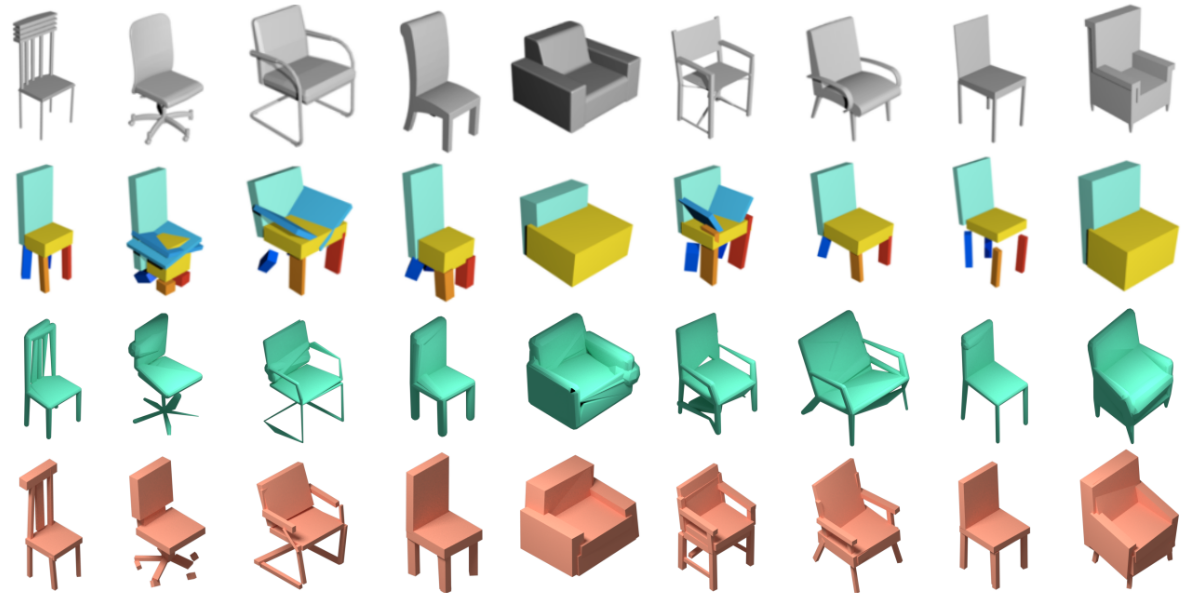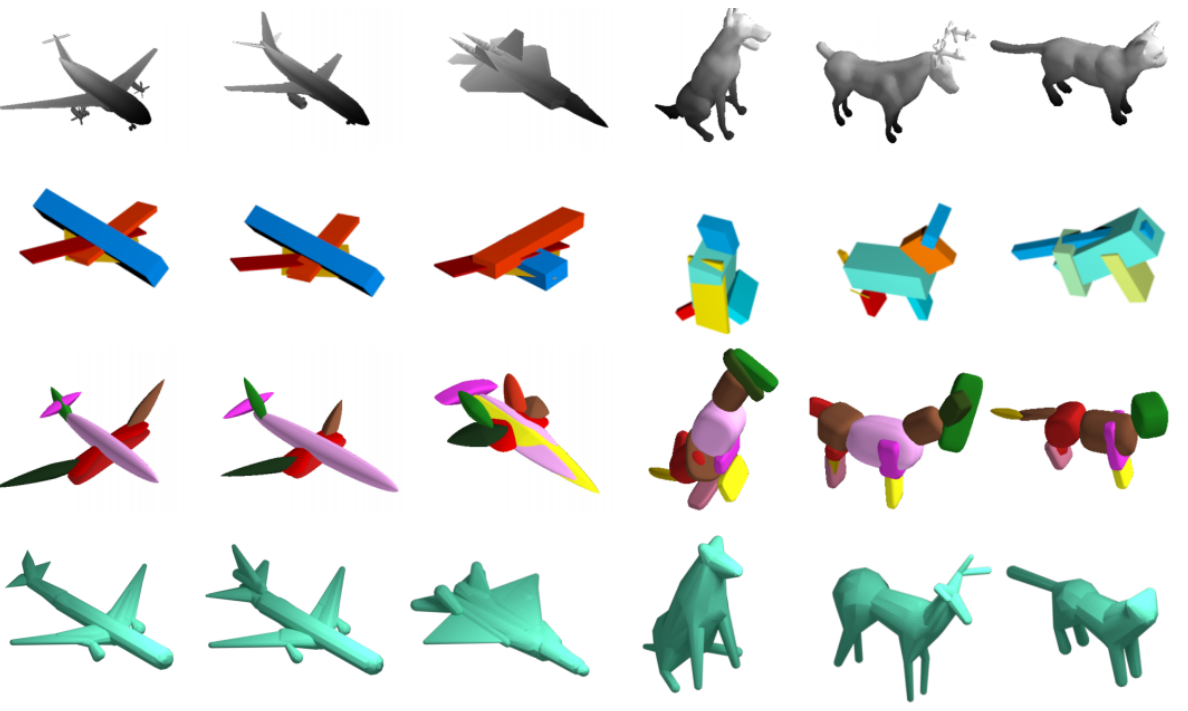**Learning Generative Models of Shape Handles**
[Matheus Gadelha](http://mgadelha.me)^1, [Giorgio Gori](https://haskha.github.io/)^2, [Duygu Ceylan](http://www.duygu-ceylan.com/)^2, [Radomir Mech](https://research.adobe.com/person/radomir-mech/)^2,
[Nathan Carr](https://research.adobe.com/person/nathan-carr/)^2, [Tamy Boubekeur](https://perso.telecom-paristech.fr/boubek/)^2, [Rui Wang](https://people.cs.umass.edu/~ruiwang/)^1, [Subhransu Maji](http://people.cs.umass.edu/~smaji/)^1
_University of Massachusetts - Amherst_^1
_Adobe Research_^2

We present a generative model to synthesize 3D shapes as sets of handles -- lightweight proxies that approximate the original 3D shape --
for applications in interactive editing, shape parsing, and building compact 3D representations.
Our model can generate handle sets with varying cardinality and different types of handles.
Key to our approach is a deep architecture that predicts both the parameters and existence of shape handles,
and a novel similarity measure that can easily accommodate different types of handles, such as cuboids or sphere-meshes.
We leverage the recent advances in semantic 3D annotation as well as automatic shape summarizing techniques to supervise our approach.
We show that the resulting shape representations are intuitive and achieve superior quality than previous state-of-the-art.
Finally, we demonstrate how our method can be used in applications such as interactive shape editing, completion, and interpolation, leveraging the latent space learned by our model to guide these tasks.
[**ArXiv paper**](https://arxiv.org/abs/2004.03028)
Generation
==========================================================================================

We propose a class of generative models for synthesizing sets of handles – lightweight proxies that can be easily utilized for high-level tasks such as shape editing,
parsing, animation etc. Our model can generate sets with different cardinality and is flexible to work with various types of
handles, such as sphere-mesh handles (first and third figures) and cuboids (middle figure).
Interpolation
==========================================================================================

Latent space interpolation Sets of handles can be
interpolated by linearly interpolating the latent representation $z$.
Transitions are smooth and generate plausible intermediate shapes.
Notice that the interpolation not only changes handle parameters,
but also adds new handles/removes existing handles as necessary.
Shape Parsing
==========================================================================================

**Shape parsing on the chairs dataset**. From top
to bottom, we show ground-truth shapes, results by Tulsiani et
al., results by our method using sphere-mesh handles, and
our method using cuboids handles. Note how our results (last two
rows) are able to generate handles with much better details such
as the stripes on the back of the chair (first column), legs on wheel
chairs (second column) and armrests in several other columns.

**Shape parsing on the airplanes and animals
datasets**. From top to bottom, we show ground-truth shapes, re-
sults by Tulsiani et al., results by Paschalidou et al., and
results by our model trained using sphere-mesh handles. Our re-
sults contain accurate geometric details, such as the engines on the
airplanes and animal legs that are clearly separated.
Editing and Completion
==========================================================================================

**Handle completion**. Recovering full shape
from incomplete set of handles. Using γ to control the complexity
of the completed shape (left). Predicting a complete chair from a
single handle (right).

**Editing chairs**. Given an initial set of handles, a
user can modify any handle (yellow). Our model then updates the
entire set of handles, resulting in a modified shape which observes
the user edits while preserving the overall structure.
Citation
==========================================================================================
```
@inProceedings{shapehandles,
title={Learning Generative Models of Shape Handles},
author = {Matheus Gadelha and Giorgio Gori and Duygu Ceylan and Radomir Mech and Nathan Carr and Tamy Boubekeur and Rui Wang and Subhransu Maji},
booktitle={IEEE Conference on Computer Vision and Pattern Recognition (CVPR)},
year={2020}
}
```